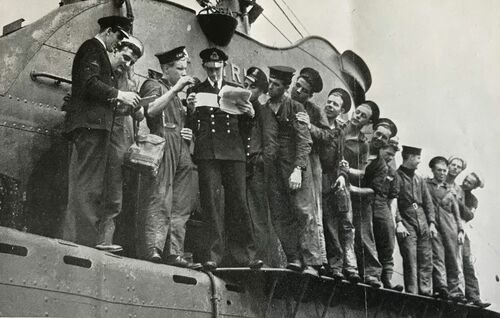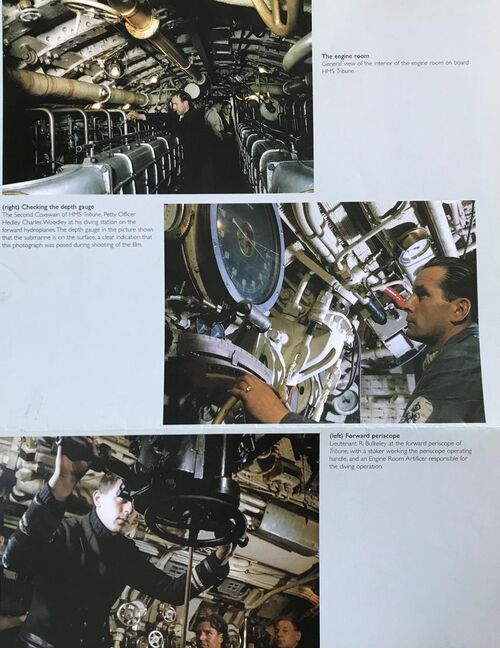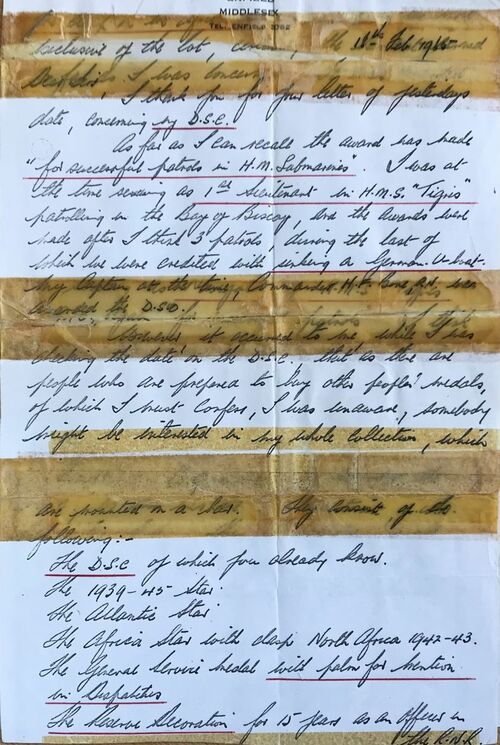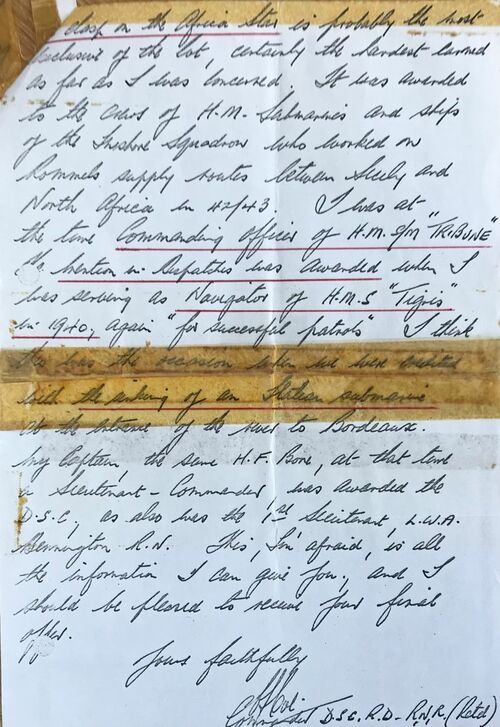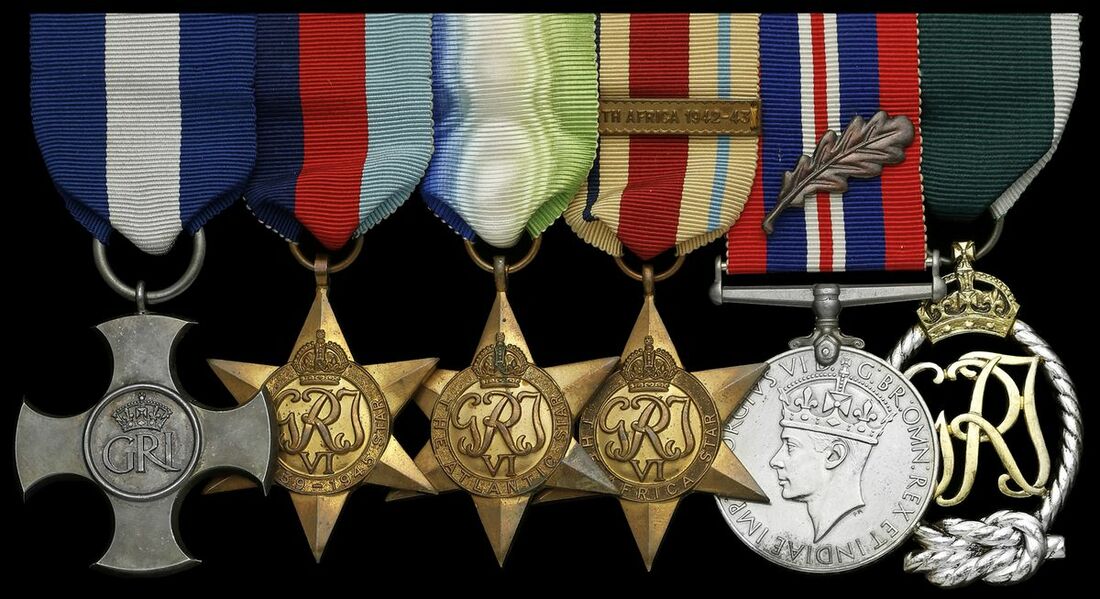Auction: 23002 - Orders, Decorations and Medals
Lot: 84
(x) A Second World War Submariner's D.S.C. group of six attributed to Commander N. J. Coe, Royal Naval Reserve, who was decorated for the Sub-on-Sub action in the sinking of the Italian submarine Michele Bianchi near Bordeaux and other successful patrols in 1941, whilst serving as the Navigator in Tigris
He had already been 'mentioned' for patrol service as 1st Lieutenant aboard the her during 1940, being present on the occasion that Tigris attacked the U-58 in the Bay of Biscay, Coe latterly commanded the Tribune
Distinguished Service Cross, G.VI.R., the reverse officially dated '1941' and additionally inscribed 'Lieut. N. J. Coe. R.N.R. H.M. Sub. Tigris.'; 1939-45 Star; Atlantic Star; Africa Star, clasp, North Africa 1942-42; War Medal 1939-45, with M.I.D. oak leaf, these last four all privately inscribed 'Lt. Cdr. N. J. Coe. D.S.C. R.D. R.N.R.'; Royal Naval Reserve Officer's Decoration, the reverse officially dated '1944', mounted as worn, good very fine (6)
D.S.C. London Gazette 23 September 1941.
R.D. London Gazette 20 April 1944.
Norman Jack Coe was born in Christchurch, Dorset in April 1908 was first appointed as Sub-Lieutenant in the Royal Naval Reserve on 3 March 1933, rising to the rank of Lieutenant on 2 May 1936. By 1939 he was a qualified submariner.
During the Second World War he served as Navigator aboard Tigris, serving under Lieutenant-Commander H. F. Bone. During a number of eventful patrols off the Bay of Biscay in 1940, Tigris at one stage engaged the U-58 but missed her target. Unsuccessful attacks were also made against two Italian submarines off Bordeaux. For these early patrols Coe was 'mentioned' (London Gazette 13 November 1940, refers).
On 5 July 1941 she as involved in the Sub-on-Sub action when she successfully engaged the Italian submarine Michele Bianchi near the mouth of the Gironde River near Bordeaux, sinking the enemy boat with all hands. It was for this action that Coe is specifically mentioned in the submarine's operations report;
'The officer of the watch, Lt. N. J. Coe, RNR, sighted what he thought was a surface vessel escorted by two trawlers. Cdr. Bone was called to the control room. Three minutes later the target was identified as an Italian submarine. The masts thought to be of two trawlers were actually the two-radio antenna of the submarine. Tigris turned to close the target at high speed. Six torpedoes were fired from 3000 yards. After nearly three minutes two hits were heard. Cdr. Bone wanted to surface to investigate the area for survivors, but a Ju-88 aircraft was seen to approach. Cdr. Bone took Tigris deep. No hits were observed. It is quite possible that Bianchi was indeed hit and sunk but there is no definite proof'.
The kill was however subsequently confirmed. Tigris was active in further patrols in the North Sea near Scandinavia claiming further victories. It was for these patrols that Coe was rewarded with the D.S.C. which was presented to him at an investiture on 25 November 1941.
Coe had the added distinction of being the first Reserve Officer in the war to pass the 'Perisher' course in November 1941.
He later served aboard the ships Oberon, H50 and H32 in the early months of early 1942, then going aboard Tribune as her commanding officer. During this time Cole oversaw the filming of the short black and white instructional film Close Quarters during service off Blyth, which was filmed aboard Tribune but was released as being the submarine Tyrant.
Coe was with Tribune during protection operations for the Arctic convoys off North Russia, notably Convoys PQ18 and QP14. During this patrol, Tribune's 14th patrol, on 10 September she sighted the German battleship Tirpitz, heavy cruiser Admiral Hipper and light cruiser Koln leaving the Gimsostrommen and steering towards Hval Fjord. Disappointingly, they were too far away to take engage with the German vessels.
He also undertook several dangerous submarine patrols in the Mediterranean between Sicily and the North African coast, disrupting the supply to Rommel's forces in North Africa. Ironically, Coe in his letter states that his 'North Africa' clasp is the most exclusive and hardest earnt during his time as a submariner.
Coe was promoted Lieutenant-Commander on 22 February 1944 and to Commander on 31 December 1950 before retiring on 28 March 1958. He died on 28 February 1967 at Enfield, Middlesex; sold together with research including a copied letter from the recipient summarising his service and medals awarded, copied black and white photographs and a photograph showing the crew of Tribune.
Subject to 5% tax on Hammer Price in addition to 20% VAT on Buyer’s Premium.
Sold for
£1,600
Starting price
£1200


